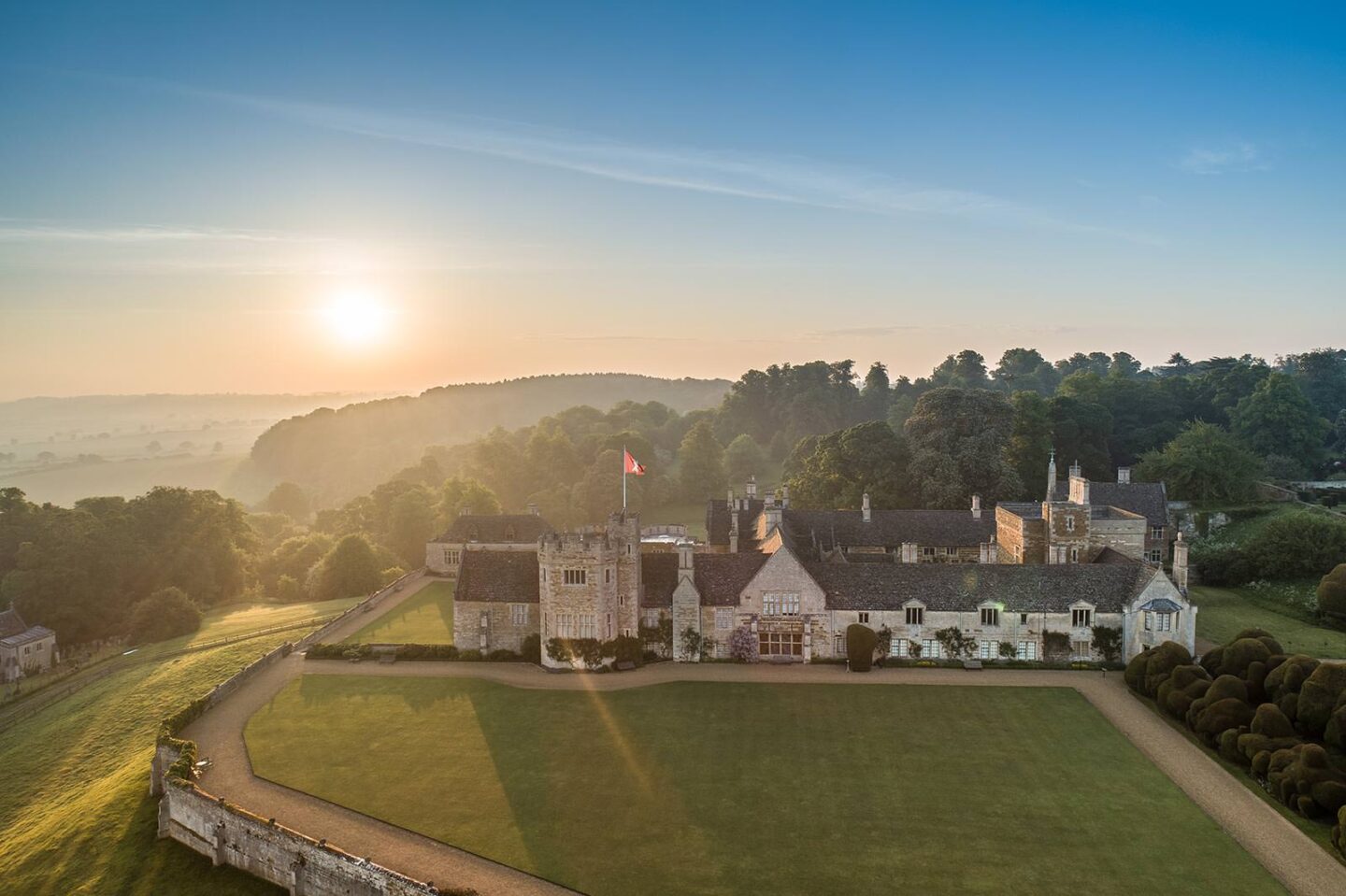
The earliest records of Rockingham is stated in the Domesday Book in 1066, which states that the site was held by the Saxon lord Bovi. The Roman colonisers established a mining community, and remains of Roman coins and tiles have been found to the north of the Castle providing evidence for these settlements.
William The Conqueror, the new King of England, set about constructing a large number of stone castles, and recognised the site of Rockingham as a base for administration and hunting. Originally, the Castle followed a standard Norman pattern with an outer bailey, curtain wall, square towers and a stone keep.
The Council of Rockingham was held at the Castle in 1095, when King William II met Anselm, Archbishop of Canterbury, together with all the bishops and barons to debate the compatibility of the Church’s allegiance to the Pope and the King. The outcome of the Council was inconclusive.
Edward I spent vast sums of money modernising the castle, adding windows and fireplaces into the Great Hall, and building a bedroom into the eaves for Queen Eleanor. He even added the surviving round towers, replacing the original square ones.
The Office of the Clerk of the King’s Works fell under the jurisdiction of controlling expenditure on royal residence, and the Castle lost it’s importance as a royal administrative centre. Edward III was the last King to visit Rockingham as a royal residence in 1375.
By 1485 Henry VII had a hunting lodge built on the Great Park, as the Castle was in a bad state of repair.
Henry VIII visited Rockingham with Queen Catherine Howard and was surprised by how dilapidated the castle was. In 1544, he leased Rockingham to Edward Watson.
Edward Watson obtained a lease on the Castle and Park. He moved into the lodge on the Park and set about converting the medieval Castle into a Tudor residence. He started with the Gallery wing and a building on the site of what is now Walker’s House. He also divided the Great Hall into two rooms with bedrooms above, and also completed the kitchen and servants quarters.
Sir Lewis Watson, Edwards grandson, bought Rockingham from King James I in 1619, and completed the gallery wing, which was then demolished during The English Civil War.
Rockingham Castle was captured by Lord Grey of Groby and ejected Lewis Watson and his family. The Castle was returned to Sir Lewis after the war, but it had been very badly damaged.
During the 18th Century, very little work took place, and was not regularly used as a family home until the 19th century.
The new owner, Richard Watson, modernised the Castle with architect Anthony Salvin. He added the flag tower, now referred to as ‘Salvin’s Tower’. Richard and his wife Lavinia were great friends of Charles Dickens, who visited Rockingham on five occasions.
Wentworth Watson claimed the Castle from his brother George, Richard’s eldest son, who made some important alterations, such as the creation of the Library. He died childless, and passed the Castle to his Great-Nephew, Sir Michael Culme-Seymour. For five years the Castle was let to an American millionaire, Victor Emmanuel, who provided the funds to install central heating and bathrooms.
Commander Sir Michael Saunders, nephew of Sir Michael Culme-Seymour, arrived in Rockingham in 1971, alongside his wife Georgina and their children.
In 1999, Michael handed over the Castle and Estate to his eldest son James who continues to use it as his family home along with his wife Elizabeth, and their three children Eleanor, Beatrice and Henry.